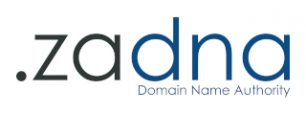Press Release:
ISPA Urges South Africans to Mark ‘Safer Internet Day’ on 08 February
Published on: 2022-02-07“Together for a better Internet” is the theme of this year’s Safer Internet Day (SID) which has become a landmark event in the global online safety calendar over the past 19 years.
In South Africa, the country’s Internet Service Providers’ Association (ISPA) is joining the call for a worldwide web free of cyberbullying and other pressing online issues that so often impact society’s most vulnerable. ISPA is a non-profit company and recognised Internet industry representative body with some 205 Internet Service Provider (ISP) members.
The Film and Publication Board (FPB) – an organisation with which ISPA enjoys a close working relationship – is the South African SID Committee member that leads SID activities in South Africa. Today, SID is celebrated in over 200 countries worldwide.
“As the primary learning tool for growing numbers of young people around the globe, the Internet simply has to become safer. ISPA calls on South African parents, teachers, the media and others with the means to spread the online safety message to get involved on 8 February and for the rest of the year,” says André van der Walt, ISPA’s Chairperson.
Parental controls can support parents in their efforts to keep your kids’ Internet experiences safe, fun, and productive. They can only work, however, when used openly and honestly in partnership with children — not as a stealth spying method.
Parents should understand that parental controls may be helpful, but they are not 100% effective, therefore it is also very important to talk to your child about using the Internet safely. More than nine in ten parents who use parental control software consider it useful.
Common Sense media is an excellent resource for parents of kids of all ages. The site breaks down parent controls into various categories including blocking websites, filtering content, setting limits, monitoring and more: https://www.commonsensemedia.org/blog/parents-ultimate-guide-to-parental-controls.
Setting parental controls through your ISP can be the easiest way to manage what your children can access across all your devices and computers in your home. While this can be done easily by most ISPs, note that any controls set in this way would then apply to anyone using the home network.
If your child has a smartphone they use outside the home, you should consider putting controls in place on that device too. Your ISP could apply controls from your router or even on their backbone infrastructure or may even distribute software that you need to manage and install on your own.
Figuring out what kind of parental control is best is entirely based on your own family’s needs. Some families can get by with simple, free browser settings to filter inappropriate content. Some families need help clamping down on screen time.
Block websites. If you just want to limit what your kids can search for, your best option is to enable Google SafeSearch in whichever browser or browsers you use. First, you need to make sure your browsers use Google as their default search engine, and then you need to turn on SafeSearch.
Block websites and filter content. If you want to prevent access to specific websites and limit your kid’s exposure to inappropriate content such as mature games or porn, you can use the parental controls that are built into your device’s operating system. Every major operating system — Microsoft’s Windows, Apple’s Mac OS, and even Amazon’s Fire — offers settings to keep kids from accessing stuff you don’t want them to see.
Block websites, filter content, impose time limits, see what my kids are doing. A full-featured, third-party parental control service such as Bark, Qustodio or NetNanny will give you a lot of control over all of your kid’s devices (the ones they use at home as well as their phones). These can be pricey (especially if you have several kids to monitor), but the cost includes constant device monitoring, offering you visibility into how kids are using their devices.
Monitor my kid’s phone. To keep tabs on your tween or teen’s phone, your best bet is to download an app to monitor text messages, social networks, emails, and other mobile functions — try Bark, ScreenTime, Circle, TeenSafe, or WebWatcher. These are especially helpful if you’re concerned about potentially risky conversations or iffy topics your kid might be engaging in. For Android, Google’s Family Link is the most integrated approach.
Track my kid’s location. You can use GPS trackers such as Google Maps, Find My Friends and FamiSafe to stay abreast of your kid’s whereabouts.
Manage all devices on the network, limit screen time, filter content, turn off Wi-Fi. There are both hardware and software solutions to control your home network and your home Wi-Fi. To name a few popular ones: OpenDNS is a download that works with your existing router (the device that brings the internet into your home) to filter internet content. Circle Home Plus is a device and subscription service that pairs with your existing router and lets you pause access to the internet, create time limits, and add content filters to all devices on your home network (including Wi-Fi devices), plus manage phones and tablets outside the home. Visit https://cleanbrowsing.org/filters/ for another excellent option that offers a free tier.
Finally, much of the activity around SID will play out on social media. Be sure to review the #SaferInternetDay and #SID2022 hashtags on social media to see the discussions taking place. More information: https://www.saferinternetday.org
Source of Parental Control Software Information above: Alan Levin, Chairman of the Internet Society – South Africa (ISOC – ZA) and member of the Internet Service Providers’ Association of SA (ISPA) PR and Marketing Working Group
Further Information
For further information, please contact the ISPA secretariat on the Contact ISPA page.






